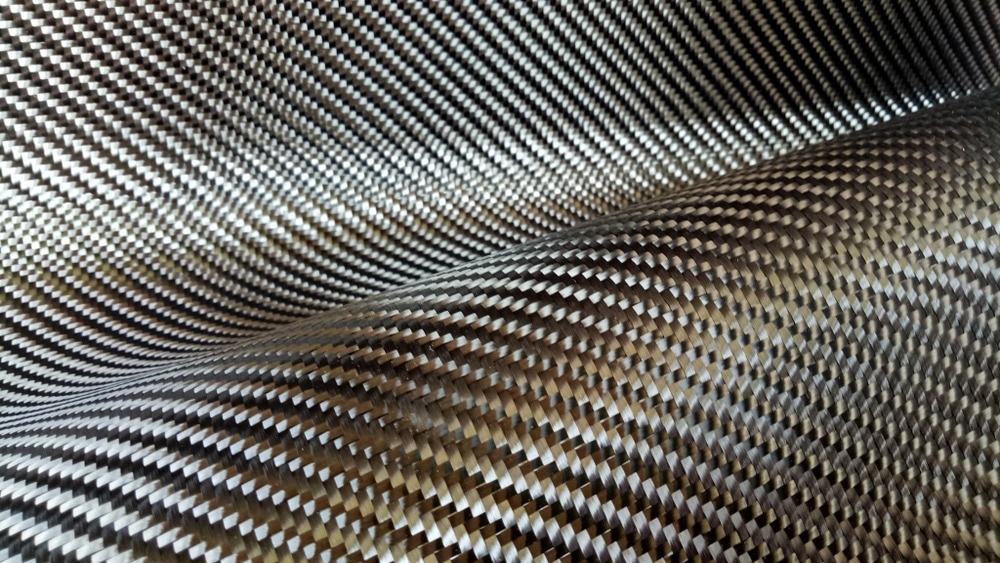 By Taha KhanReviewed by Lexie CornerMay 7 2024
By Taha KhanReviewed by Lexie CornerMay 7 2024The miniaturization and increasing power demands of modern electronics have led to a critical challenge in heat dissipation. Excessive heat buildup can cause performance degradation, component failure, and a reduced device lifespan of the electronic components.1

Image Credit: Composite_Carbonman/Shutterstock.com
Material science is tackling this challenge by introducing several materials for heat management applications. This article explores the advancements, applications, challenges, and future of composite phase change materials (PCMs) in enhancing electronic devices.
The Role and Importance of PCMs in Electronics
PCMs are materials that absorb and release thermal energy through changes in their physical state. They can be categorized as liquid-gas, solid-solid, solid-gas, and solid-liquid, depending on their phase transition states.2
The heat generated by an electronic device is absorbed by the PCM, which is integrated into heat sinks or directly onto critical components, effectively managing temperature fluctuations.
Upon cooling, PCM solidifies, releasing the stored thermal energy and completing the phase change cycle. However, traditional PCMs often face limitations such as low thermal conductivity and leakage issues, which hinder effective heat transfer from the source.
Advanced composite PCMs address these limitations by incorporating various materials and structures to enhance performance.1, 2
Advancements in Composite PCMs
Research on composite PCMs for electronic applications typically focuses on improving thermal conductivity, stability, and encapsulation.
For this purpose, researchers adopt several improvement strategies, including embedding metal nanoparticles, carbon fibers, and graphene into PCMs to create heat transfer pathways, significantly enhancing heat dissipation from electronic components.
Encapsulating PCMs within porous structures, such as metal foams or carbon aerogels, also prevents leakage and maintains the material's shape during phase transitions, ensuring long-term operational stability and preventing damage to surrounding components.3, 4
For instance, in a recent study, researchers developed a novel composite PCM by embedding metal foam within graphene aerogel to enhance the thermal properties of PCM for latent heat energy storage. 4
The study utilized copper foam with a cubic periodic unit structure, chosen for its high thermal conductivity, porosity, and low density, facilitating rapid fabrication. Paraffin and erythritol were used as the PCM embedded in the metal foam.
Numerical simulations demonstrated that this new composite PCM exhibits shorter melt condensation time and more uniform internal temperature distribution compared to graphene-aerogel composite PCM alone. The addition of metal foam significantly improved the effective thermal conductivity and melting/solidification rate of the composite PCM, offering a solution for thermal management in energy storage applications.4
Bionically Engineered Thermal Solutions
In another 2024 study, researchers developed advanced multifunctional PCMs to address the growing demand for highly integrated electronic devices.
They adopted a bionical approach to create neural network-like CNF@Co/C aerogels by incorporating ZIF-67 onto bacterial cellulose (BC), followed by calcination. Encapsulating thermal storage units within these aerogels resulted in multifunctional composite PCMs (PW-CNF@Co/C aerogels) with enhanced solar-thermal conversion efficiency (95.27 %) and microwave absorption capacity (RL of -26.8 dB at 10.91 GHz).1
These aerogels exhibit promising applications in thermal management, solar-thermal conversion, and mitigation of electromagnetic interference (EMI) in electronic devices, thus addressing challenges related to overheating, overcooling, and EMI.
This study could significantly contribute to the development of highly integrated and miniaturized electronic devices suitable for diverse outdoor environments.1
Application in Electronics
Composite PCMs effectively maintain lower core temperatures within electronic devices, reducing thermal stress on components and thereby extending device lifespan. Improved thermal management also allows for the incorporation of more powerful components into smaller devices without compromising performance.
These advantages make composite PCMs desirable materials for diverse electronic applications. For instance, central processing units (CPUs) and graphics processing units (GPUs) generate significant heat; composite PCMs integrated into heat sinks or directly onto the processors effectively absorb and dissipate heat, enabling sustained peak performance during tasks.
Similarly, composite PCMs can be strategically placed around power converters, inverters, and other power electronics components to manage thermal fluctuations and prevent overheating.5, 6
Enhanced Heat Transfer in Nanocomposite PCM Heat Sinks
A 2021 study investigated the melting behavior and heat transfer capabilities of a nanocomposite phase change material (NCPCM) based heat sink using copper (Cu) nanoparticles for application in passive cooling of electronic components.
The researchers conducted transient simulations to assess thermal performance by dispersing Cu nanoparticles in RT–28HC PCM at various volume fractions (0.00, 0.01, 0.03, and 0.05).
Results indicated enhanced heat transfer rates and reduced melting times with the addition of Cu nanoparticles. Specifically, there was a decrease in melting time by -2.56 %, -1.81 %, and -1.36 % at 0.05, 0.03, and 0.01 volume fractions, respectively, compared to the pure PCM heat sink.
This study highlights the potential for optimizing heat sink designs for efficient passive cooling of electronic components, particularly emphasizing the benefits of using Cu nanoparticles at a 0.01 volume fraction for improved heat transfer rates and reduced melting times.7
Challenges and Limitations
Integrating composite PCMs in electronic components provides benefits such as improved thermal management, leading to thinner and lighter devices with enhanced battery life due to more efficient heat dissipation. However, there are also challenges associated with the use of composite PCMs that may hinder their widespread adoption.
For instance, ensuring compatibility between composite PCMs and existing electronic components during device assembly is crucial, as thermal expansion mismatch and potential chemical reactions can pose significant challenges.
Advanced composite PCMs can also be expensive to manufacture due to the use of specialized materials and complex fabrication processes; therefore, scaling up production for large-scale electronic applications requires cost-effective and efficient manufacturing methods.2, 5
Future Prospects for Composite PCMs
The future of composite PCMs is tied to ongoing research efforts focused on overcoming existing challenges associated with integrating these materials into electronics.
Therefore, exploring novel materials and fabrication techniques to further enhance the thermal conductivity, stability, and encapsulation of PCMs, as well as developing cost-effective and scalable manufacturing processes to make composite PCMs more commercially viable, is the way forward.
More from AZoM: Revolutionizing Recycling: New Advances in Polyester Depolymerization
References and Further Reading
- Li, Y., et al. (2024). Neural network-inspired hybrid aerogel boosting solar thermal storage and microwave absorption. Nano Research Energy. doi.org/10.26599/NRE.2024.9120120
- Radouane, N. (2022). A comprehensive review of composite phase change materials (cPCMs) for thermal management applications, including manufacturing processes, performance, and applications. Energies. doi.org/10.3390/en15218271
- Hu, H. (2020). Recent advances of polymeric phase change composites for flexible electronics and thermal energy storage system. Composites Part B: Engineering. doi.org/10.1016/j.compositesb.2020.108094
- Pan, C., He, P., Shi, E. (2022). Numerical simulation of thermal properties of cubic period metal foam embedded graphene-aerogel composite PCM. Journal of Physics: Conference Series. doi.org/10.1088/1742-6596/2383/1/012128
- Zhou, B., Zhen, L., Yang, Y., Ma, W., Fu, Y., Duan, X., Wang, H. (2022). Novel composite phase change material of high heat storage and photothermal conversion ability. Journal of energy storage. doi.org/10.1016/j.est.2022.104101
- Maqbool, Z., Hanief, M., Parveez, M. (2023). Review on performance enhancement of phase change material based heat sinks in conjugation with thermal conductivity enhancers for electronic cooling. Journal of Energy Storage. doi.org/10.1016/j.est.2022.106591
- Arshad, A., Jabbal, M., Faraji, H., Talebizadehsardari, P., Bashir, MA., Yan, Y. (2021). Numerical study of nanocomposite phase change material-based heat sink for the passive cooling of electronic components. Heat and mass transfer. doi.org/10.1007/s00231-021-03065-2
Disclaimer: The views expressed here are those of the author expressed in their private capacity and do not necessarily represent the views of AZoM.com Limited T/A AZoNetwork the owner and operator of this website. This disclaimer forms part of the Terms and conditions of use of this website.